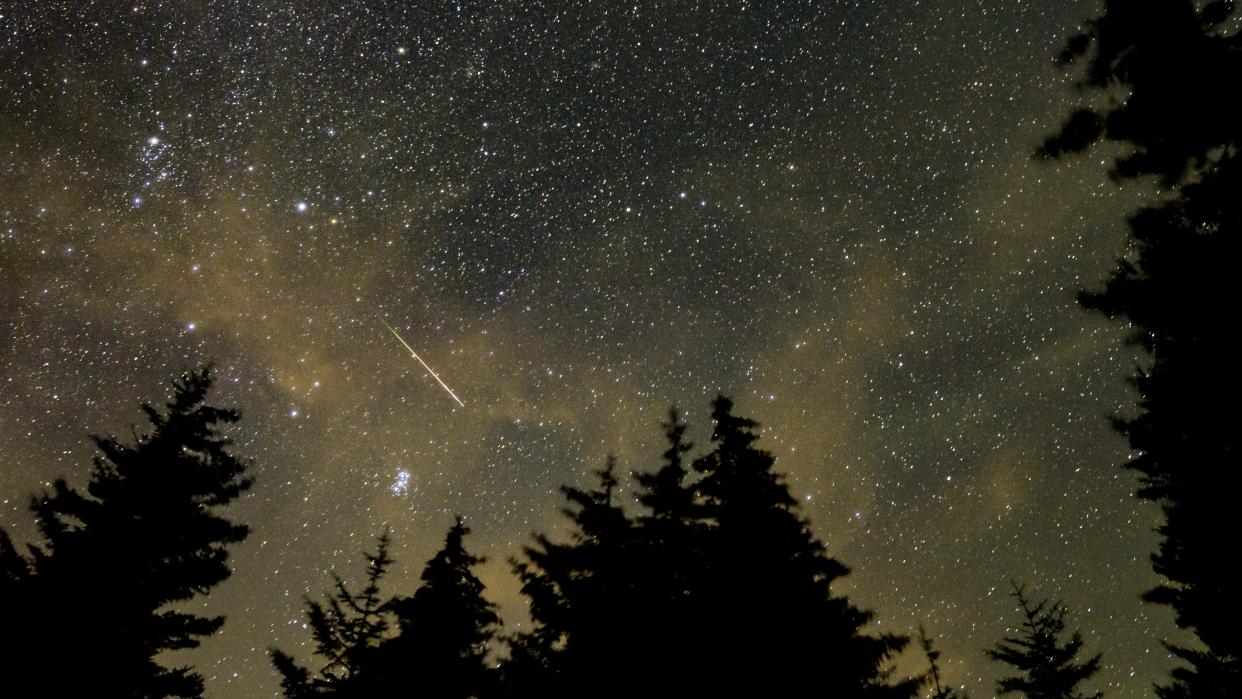Celestial events to watch in 2024

The cosmos are always moving, changing and making way for awe-inspiring astronomical phenomena. These are the best, most exciting events to watch for in the coming weeks and months.
Perseid meteor shower (July 17 - Aug. 24, 2024)
The Perseid meteor shower is one of the most vibrant of the year. While it lasts approximately a month, the shower is expected to peak between Aug. 11 and Aug. 12. At its peak, you can expect to see 60 to 100 meteors in an hour from a dark place, making the Perseid shower "widely sought after by astronomers and stargazers," TimeandDate said.
The Perseids are caused by debris from the comet 109P/Swift-Tuttle. The meteors "frequently leave long 'wakes' of light and color behind them as they streak through Earth's atmosphere," said NASA. At the peak of the shower, "the moon will be about 50 percent illuminated," the Smithsonian said. "It will set at midnight, so optimal viewing conditions are early in the morning until dawn."
Partial lunar eclipse (Sept. 18, 2024)
On the night of Sept. 17 into Sept. 18, a portion of the moon will pass through the Earth's shadow, resulting in a partial lunar eclipse. The phenomenon will be visible throughout North and South America, Europe and Africa. Unlike a solar eclipse, a lunar eclipse can be viewed without protective eyewear.
"Because the moon orbits the Earth at an angle of about five degrees — rather than along a flat plane — the shadow is often cast above or below the moon's orbit," said the Smithsonian. However, "about twice a year during the full moon, the angle is just right for an eclipse."
Annular solar eclipse (Oct. 2, 2024)
An annular or "ring of fire" solar eclipse will be visible on Oct. 2. In an annular eclipse, "the moon is slightly farther from Earth. So, even when the disks align from our perspective, the moon's shadow doesn't completely block out the sun's light," said Space.com. "Instead, a ring of sunlight is visible around the moon." The true annular eclipse will be visible from southern Chile and southern Argentina, while a partial solar eclipse, where the moon covers only part of the sun, will be visible across the Pacific Ocean and South America.
It is never safe to look directly at an annular eclipse and eclipse glasses are necessary. This annular eclipse will cover 93% of the sun and last approximately seven and a half minutes, which is longer than usual. The best location to see the eclipse is Rapa Nui or Easter Island. "Remarkably, it will be the second time a central solar eclipse has been visible from this tiny Pacific island in recent decades," said Space.com.
Comet Tsuchinshan-ATLAS (Oct. 12 - 19, 2024)
The comet Tsuchinshan-ATLAS will pass near Earth in fall of 2024. It is also expected to be visible to the naked eye. The comet will be approximately 44 million miles away from Earth at its closest point, and has the potential to be bright and vibrant. "Pretty much right away, it started a buzz in the comet community, because predictions were putting it all over the place in terms of how bright it could get," Ariel Graykowski, a planetary astronomer at the SETI Institute in Mountain View, California, said to Scientific American.
Comets are notoriously unpredictable, being that they are "dusty, icy relics of planetary formation that were hurled to the solar system's outskirts eons ago," said Scientific American. Like leftovers at the back of your freezer, "they spend most of their time inert and unnoticed in the dark." As this event gets closer, scientists can better predict its visibility; however, many already forecast a "fantastic celestial spectacle."
Orionid meteor shower (Sept. 26 - Nov. 22, 2024)
The Orionid meteor shower is a staple of the fall. This year it will peak between Oct. 20 and Oct. 21 with a rate of approximately 20 meteors per hour. "Sometimes the Orionid meteor shower produces spectacular displays of up to 80 meteors an hour, but in recent years it has produced more modest displays of about 20 or 30 visible meteors per hour," said Space.com. The Orionids are also produced from Halley's comet like the Eta Aquarids.
Visibility this year may be reduced because the "moon will be 79% illuminated at the time of the peak." Space.com added. However, they should still be visible to both the northern and southern hemispheres. To have the best view, go to as dark a location as possible between midnight and dawn and let your eyes adjust.

